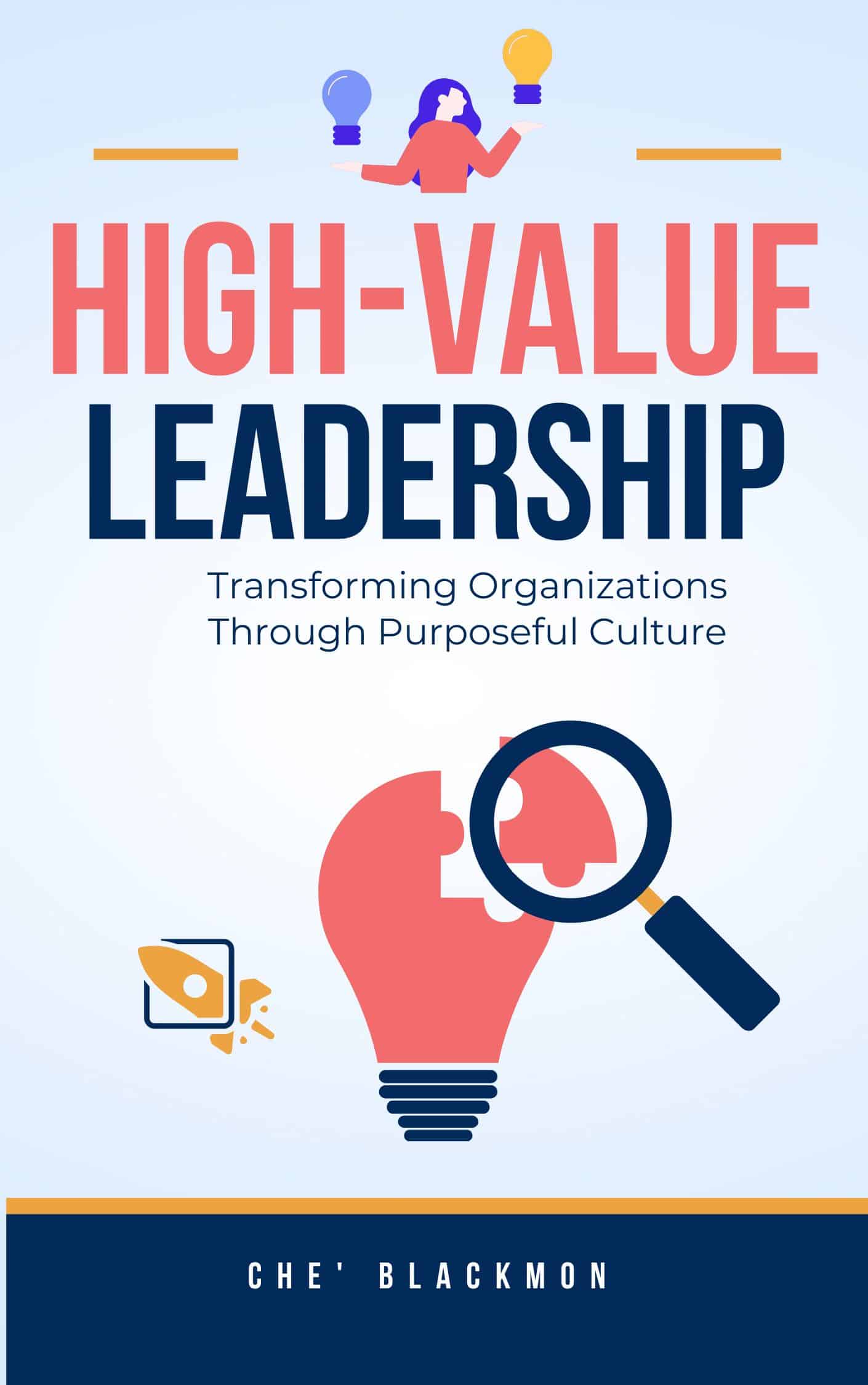Your cart is currently empty!

“In the midst of chaos, there is also opportunity.” — Sun Tzu
The emergency room erupted in controlled chaos. A trauma patient arrived just as two other critical cases demanded attention. Yet the medical team moved with synchronized precision, each member confidently voicing concerns, asking questions, and making split-second decisions. No one feared judgment for speaking up. No one hesitated to admit uncertainty. This wasn’t luck—it was psychological safety in action.
In my twenty-plus years transforming organizational cultures, I’ve witnessed how psychological safety becomes the invisible foundation that determines whether teams crumble or excel under pressure. When I wrote “High-Value Leadership: Transforming Organizations Through Purposeful Culture,” I emphasized that trust isn’t a nice-to-have—it’s the cornerstone of high performance, especially when stakes are highest.
The High-Stress Reality: Why Psychological Safety Matters More Than Ever
Today’s workplace is a pressure cooker. Economic uncertainty, rapid technological change, and global disruptions have created environments where stress isn’t occasional—it’s constant. Research by Dr. Amy Edmondson at Harvard Business School shows that teams with high psychological safety are 76% more likely to engage in creative problem-solving during crises.
Yet paradoxically, stress often erodes the very trust needed to navigate challenges successfully. When pressure mounts, leaders may become more controlling. Team members may withdraw to protect themselves. Innovation freezes as people focus on survival rather than solutions.
This creates what I call the “stress spiral”—where fear reduces psychological safety, which increases mistakes, which heightens stress, which further erodes trust. Breaking this cycle requires intentional, strategic leadership.
As Dave Ulrich notes in his updated HR Business Partner model, creating environments where people can perform under pressure isn’t just about individual resilience—it’s about building organizational capabilities that transform stress into strength. This shift from managing stress to leveraging it represents a fundamental evolution in how we think about workplace psychology.
Anatomy of Psychological Safety: Understanding the Foundation
Psychological safety isn’t about being “soft” or avoiding accountability. As I discussed in “Mastering a High-Value Company Culture,” it’s about creating an environment where people feel safe to take risks, make mistakes, ask questions, and challenge the status quo—all while maintaining high performance standards.
The Four Pillars of Psychological Safety in High-Stress Environments:
1. Permission to Be Human
People must feel they can show vulnerability without being penalized. This doesn’t mean accepting poor performance—it means recognizing that humans under stress need support, not judgment.
Real-World Example: When Microsoft CEO Satya Nadella took the helm in 2014, the company culture was notorious for internal competition and fear-based management. Nadella introduced a “growth mindset” philosophy that explicitly gave permission to fail, learn, and grow. The result? Microsoft’s market value increased by over 600%, and employee satisfaction soared.
2. Clarity in Chaos
High-stress environments often breed confusion. Psychological safety requires clear expectations, roles, and communication channels—especially when everything else feels uncertain.
3. Collective Accountability
Rather than finger-pointing when things go wrong, psychologically safe teams focus on collective problem-solving. Everyone owns both successes and failures.
4. Continuous Learning Loops
Mistakes become teachable moments rather than career-limiting moves. This transforms pressure from a threat into an opportunity for growth.
The Trust Equation: Building Safety When Stakes Are High
Creating psychological safety in high-stress environments requires a different approach than in stable conditions. Here’s the framework I’ve developed through years of working with organizations in crisis:
The TRUST Framework
T – Transparent Communication In high-stress situations, information vacuums breed fear. Leaders must communicate frequently, honestly, and clearly—even when they don’t have all the answers.
Practical Application: Institute daily “huddles” during high-stress periods. Keep them brief (10-15 minutes) but consistent. Share what you know, what you don’t know, and what you’re doing to find out. This prevents rumor mills and builds confidence through transparency.
R – Responsive Leadership Leaders must be visibly present and emotionally available during stressful times. This doesn’t mean having all the answers—it means being there to listen, support, and guide.
Case Study: During the 2008 financial crisis, TD Bank’s CEO Ed Clark held weekly video calls with all employees, answering unscripted questions and admitting when he didn’t have answers. This radical transparency helped TD Bank maintain employee trust and emerge stronger while competitors crumbled.
U – Unified Purpose Stress can fragment teams. Psychological safety requires constantly reconnecting people to shared purpose and values. This creates cohesion when external forces threaten to pull teams apart.
S – Systematic Support Build formal support systems before you need them. This includes peer mentoring, stress management resources, and clear escalation paths for concerns.
T – Time for Recovery High-stress environments can’t be sustained indefinitely. Build in recovery periods and celebrate small wins to prevent burnout and maintain trust.
Breaking the Silence: Overcoming Barriers to Speaking Up
In “Rise & Thrive: A Black Woman’s Blueprint for Leadership Excellence,” I addressed how psychological safety becomes even more complex for those navigating additional barriers. For Black women and other underrepresented groups, speaking up in high-stress environments carries additional risks.
Common Barriers to Psychological Safety:
- Fear of Confirming Stereotypes: Underrepresented employees may fear that mistakes will reflect on their entire group.
- Power Dynamics: Hierarchical structures can silence lower-level employees, especially under stress.
- Cultural Differences: Different cultural backgrounds may have varying comfort levels with direct communication or challenging authority.
- Historical Mistrust: Past negative experiences can make employees hesitant to be vulnerable.
Strategies for Inclusive Psychological Safety:
- Amplify Diverse Voices: Actively invite input from quieter team members
- Rotate Leadership: Give different people opportunities to lead meetings or projects
- Address Microaggressions Immediately: Don’t let small incidents erode trust
- Create Multiple Feedback Channels: Not everyone feels safe speaking up in groups
The Leader’s Playbook: Practical Strategies for Building Trust Under Fire
1. Model Vulnerability First
Leaders set the tone. When you admit mistakes, ask for help, or express uncertainty, you give others permission to do the same.
Action Step: In your next team meeting, share a specific mistake you made and what you learned. Then ask, “What mistakes have taught you something valuable recently?”
2. Establish “Learning Rituals”
Create structured opportunities for reflection that become part of your team’s DNA.
Practice Example: The U.S. Army’s “After Action Reviews” (AARs) provide a model for high-stress learning. After every mission, teams gather to discuss:
- What was supposed to happen?
- What actually happened?
- Why were there differences?
- What can we learn?
No blame, no rank—just learning.
3. Create Psychological Safety Metrics
What gets measured gets managed. Track indicators of psychological safety:
- How often do team members challenge ideas in meetings?
- How quickly do people report problems or mistakes?
- What percentage of team members contribute ideas?
- How do engagement scores change during high-stress periods?
4. Build Stress Inoculation
Like vaccines, small doses of managed stress can build immunity. Create controlled challenges that let teams practice trust under pressure.
Implementation Idea: Run quarterly “pressure tests”—simulated crises where teams must collaborate under time constraints. Debrief focusing on communication, trust, and support rather than just outcomes.

The Ripple Effect: How Psychological Safety Transforms Performance
When psychological safety takes root in high-stress environments, the transformation is remarkable:
Enhanced Innovation: Google’s Project Aristotle found that psychological safety was the #1 factor in team effectiveness—more important than talent, resources, or seniority.
Improved Decision-Making: Teams make better decisions when all perspectives are heard, especially under pressure when diverse viewpoints matter most.
Increased Resilience: Trust becomes a shock absorber, helping teams bounce back from setbacks faster.
Accelerated Learning: Mistakes become data points for improvement rather than sources of shame.
Stronger Retention: Employees stay with organizations where they feel safe, valued, and supported—especially after weathering storms together.
Your Action Plan: Building Trust in Your Trenches
Creating psychological safety in high-stress environments isn’t a one-time initiative—it’s an ongoing practice. Here’s your roadmap:
Week 1-2: Assess Current State
- Survey your team anonymously about psychological safety
- Identify specific stressors in your environment
- Recognize existing trust gaps
Week 3-4: Set Foundation
- Share psychological safety concepts with your team
- Establish team norms for high-stress situations
- Create initial support structures
Month 2: Implement Practices
- Begin daily huddles or check-ins
- Institute learning rituals
- Model vulnerability as a leader
- Address barriers to speaking up
Month 3: Measure and Adjust
- Track psychological safety metrics
- Gather feedback on new practices
- Celebrate early wins
- Refine approaches based on results
Ongoing: Sustain and Scale
- Make psychological safety practices habitual
- Share successes across the organization
- Build these principles into hiring and onboarding
- Create a culture where trust thrives under pressure
Discussion Questions for Leadership Teams
- What specific stressors does our team face that might erode psychological safety?
- How do we currently respond when someone makes a mistake under pressure?
- Which voices might be missing from our high-stress decision-making? Why?
- What would need to change for every team member to feel safe speaking up during a crisis?
- How can we build psychological safety practices into our daily operations before stress hits?
Transform Your High-Stress Environment into High-Trust Culture
Building psychological safety in challenging environments requires more than good intentions—it demands strategic expertise, proven frameworks, and consistent execution. When pressure threatens to fracture your team, you need approaches that transform stress into strength.
Che’ Blackmon Consulting specializes in helping organizations build trust where it matters most:
- Crisis Culture Assessment: Evaluate your current psychological safety levels and identify critical gaps
- Leadership Coaching: Develop leaders who can maintain trust under extreme pressure
- Team Transformation Workshops: Build collective capabilities for high-stress performance
- Systemic Culture Change: Embed psychological safety into your organizational DNA
- Measurement and Sustainment: Track progress and ensure lasting transformation
With over twenty years of experience transforming cultures in high-pressure industries, I understand that building trust in the trenches requires both tactical excellence and strategic vision.
Ready to transform your high-stress environment into a high-trust culture?
Schedule a discovery call to explore how psychological safety can become your competitive advantage. Visit cheblackmon.com or email admin@cheblackmon.com to begin building unshakeable trust in your organization.
Because when the pressure rises, trust isn’t just important—it’s everything.
Che’ Blackmon is the founder of Che’ Blackmon Consulting, a Fractional HR Leadership and Culture Transformation firm. Author of three books on leadership and culture, including “High-Value Leadership: Transforming Organizations Through Purposeful Culture,” she helps organizations build psychological safety that transforms high-stress environments into high-performance cultures.
#PsychologicalSafety #LeadershipDevelopment #CrisisManagement #OrganizationalCulture #HighPerformanceTeams #TrustInLeadership #WorkplaceCulture #StressManagement #TeamDynamics #ExecutiveLeadership #HRStrategy #CultureTransformation #InclusiveLeadership #BusinessResilience #LeadershipCoaching


